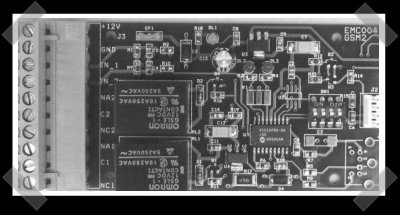
[dcb] posted about his work on the mpgduino mpguino. The project uses an arduino with a LCD display to monitor fuel consumption based on vehicle speed and the pulses of the fuel injectors being fired. It’s definitely an interesting project given current fuel costs and the passive nature of the project. You can easily tap the wires needed for the monitor and remove it without voiding your warranty (not that we really care).
Month: May 2008
Best Of The Rest
Here are some more stories from today that we found interesting:
- First Wii Fit hack: Control Google Earth
- New Android UI demoed
- Google opens App Engine
- Windows 7 demoed, multitouch ducttaped in
- Mac security update released
- Hacker scripts $50000 in microdeposits
- Displacements shows history of white washed room
- Biggest drawing in world was a hoax
Embedded LED Pong Table

There are few things that are enduring and axiomatic in life, but one of the things on our short list is love of Pong. Designer [Moritz Waldemeyer] apparently shares our obsession: you may remember the LED-lined stage uniforms he designed for OK Go, but this concept for a Pong table is certainly older and arguably several times more awesome.
Giant Fabric Keyboard

[ladyada] pointed us in the direction of this giant fabric keyboard built by [Maurin Donneaud]. The construction of it looks fairly simple, like the buttons used in [fbz]’s WiFi detecting backpack strap, but on a larger scale. We’ll take you through its construction, pictures and all, after the break.
Beverage Cooling Contraption Contest

Let’s face it: no one likes warm beer. In the arid August air of Las Vegas, though, it’s difficult to get anything else. To combat this problem, Deviant has hosted a competition the last three years at Defcon called the Beverage Cooling Contraption Contest, or BCCC. We’re not talking about something as simple as a Coleman cooler or even a peltier cooler: the devices entered in this contest have to be able to take a beer from hot to cool and your glass within minutes.
GSM Remote Control Project

It’s been a while since we’d seen any new SMS/GSM/serial remote interface projects. [Emanuele] sent in his version of a project to do just that. It uses a PIC16F84 and will send or receive commands. A pair of relays provide options for controlling whatever you want to hook it up to. You’ll need a login, but he’s released the full schematics and firmware. He developed this to find uses for old phones, but an alternative is to pick up a cheap calling card cell and dedicate it to a project like this. This seems like a great way to add an out of band alarm system to your house/car/robotic minion.
Porting CHDK To New Cameras

While researching the CHDK How-To, we came across the team’s instructions for porting the firmware to entirely new cameras. In theory, CHDK should work on any Canon running the DIGIC II or III processor since most of them are running the same VxWorks OS. A dump of the camera’s firmware is required before porting work can begin. On some cameras, the firmware was retrieved using software, but others required a hardware route. Pictured above is a Canon A610 that’s slowly flashing out every bit of its firmware using the built in LED. The photodiode is hooked up to a soundcard where the entire bitstream is recorded. It takes 1-7 hours to read the entire firmware. Once the sound file has been captured, it’s reverted to the original bytes and can then be decompiled with something like IDApro.











